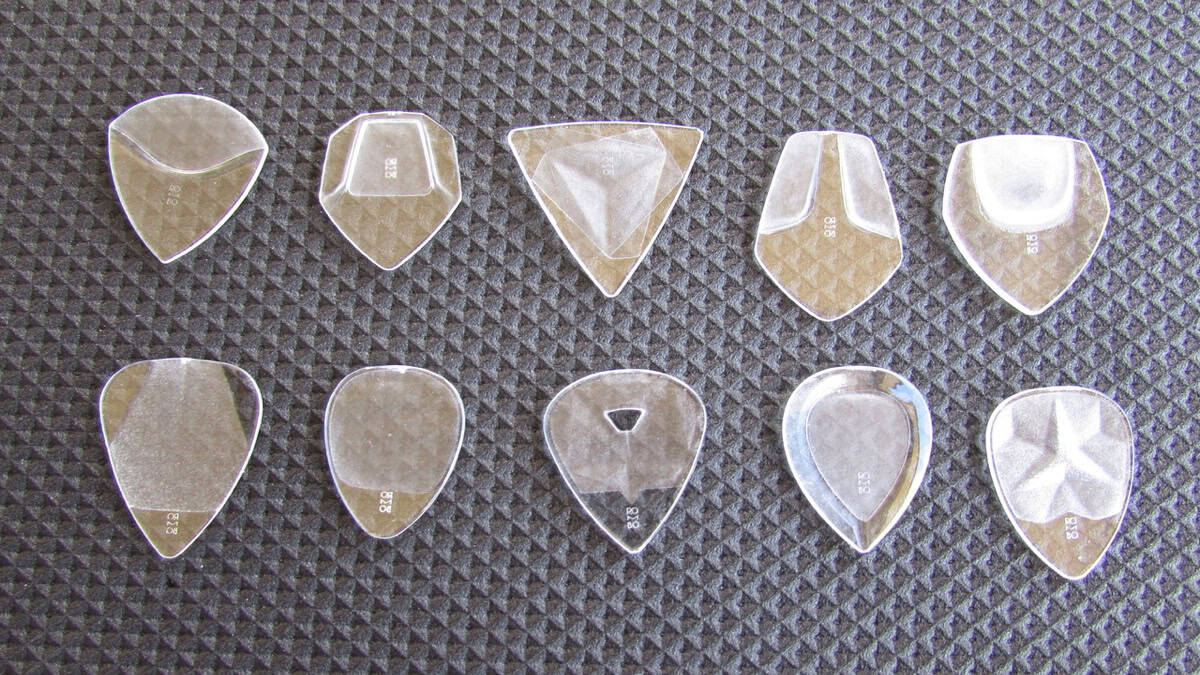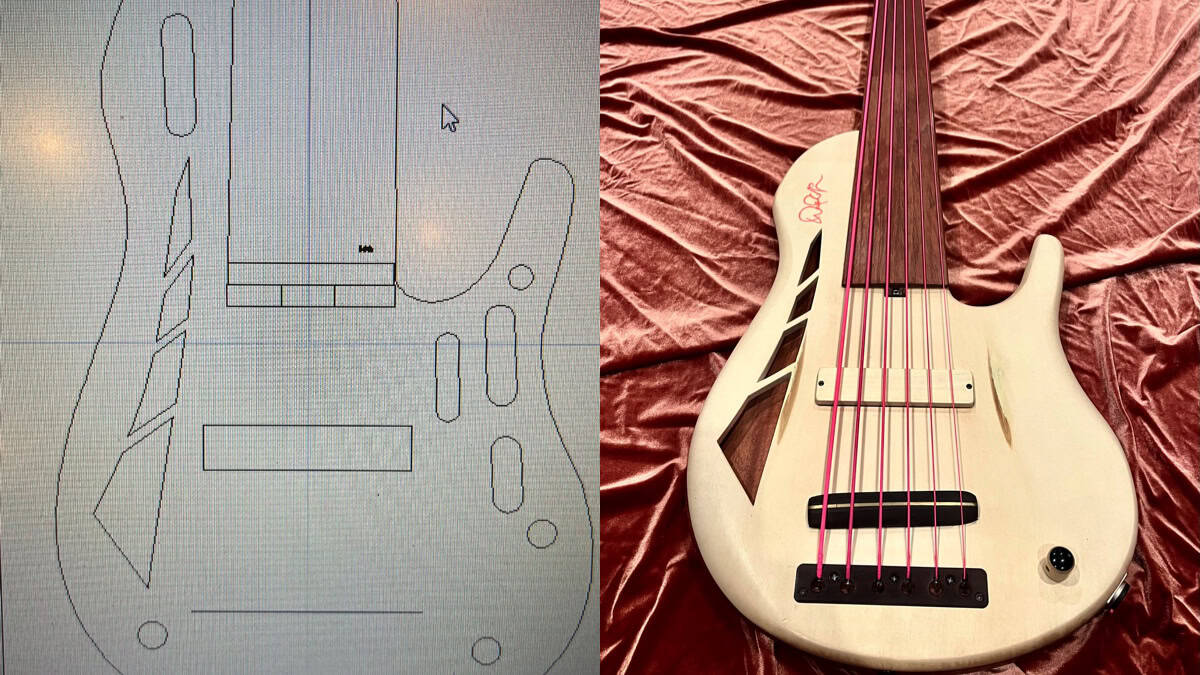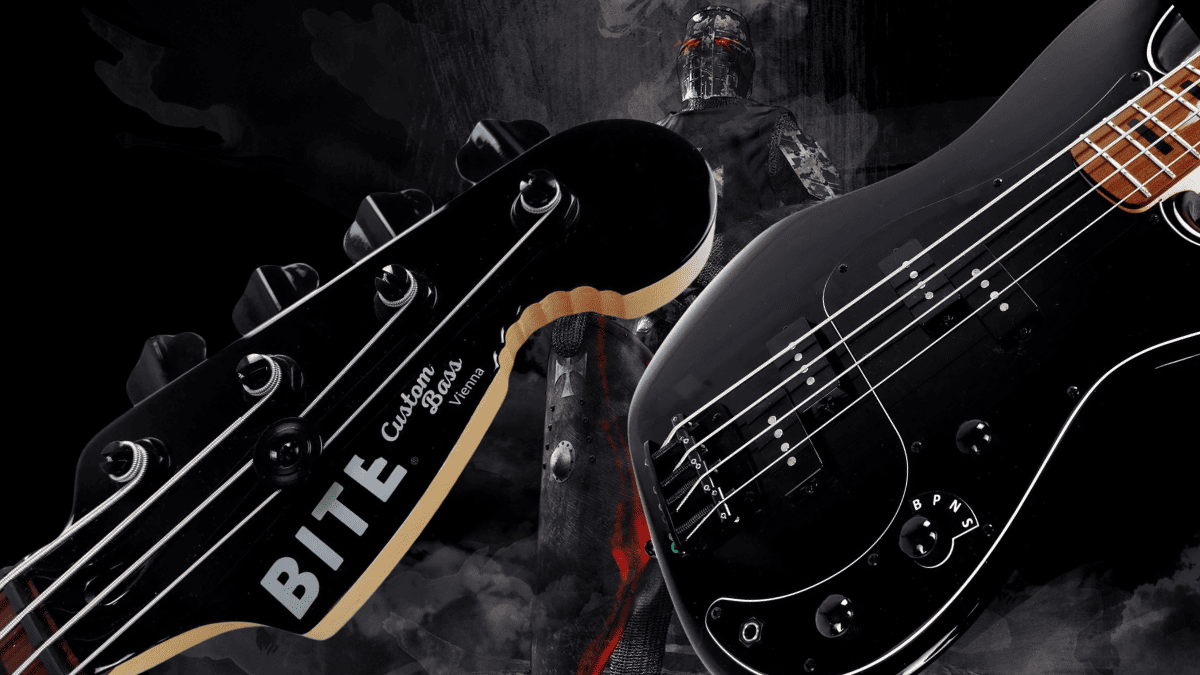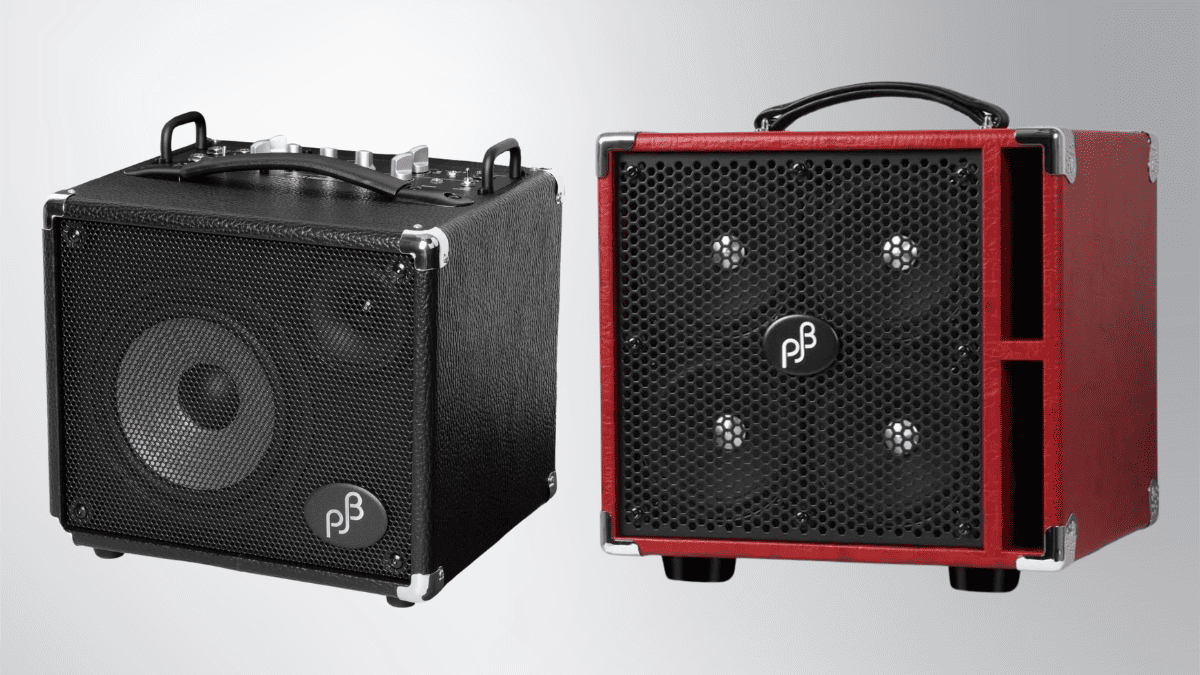Gear Reviews
Review – Sire Guitars Releases New Bass Guitar Model – The Sire M7

Over the past year or so, Sire Guitars has taken the bass world by storm with their hot selling Marcus Miller by Sire V7 bass guitar. The Sire V7, a jazz bass type of instrument, hit the market with an astonishingly high level of quality. That was coupled with a shockingly low price, putting the Sire V7 within the grasp of virtually every bass player all over the world. Bass players all over the world are proclaiming the Sire V7 as a great sounding jazz bass with great playability and very high quality construction at a very affordable price.
Having thrown down as formidable a gauntlet as the Sire V7, Sire Guitars knew that they would have to maintain their high level of quality as well as their low pricing on future models. That is exactly what they did when they released their fretless Sire V7 and their Vintage Sire V7, which is modeled after the 1975 jazz bass (these basses will be reviewed in the near future).
Sire Guitars recently introduced a new model of bass guitar. This model is the Marcus Miller by Sire M7 bass guitar. Like the Sire V7, legendary bassist Marcus Miller was involved in the design of the Sire M7. The result is spectacular! The Sire M7 has gorgeous aesthetics, with a well-balanced symmetry with respect to the headstock and body size. The design of the Sire M7 is modern and, again much like the Sire V7, it compares very favorably with basses costing three times as much as it costs. Unlike the Sire V7, the Sire M7 offers two humbucker pickups.
Okay, Tell Me About It
Although things like neck profile are subjective and hard to describe, the Sire M7 has a fantastic C-neck profile. It is a very easy and comfortable neck to play straight out of the box. The finish of the neck is satin, making for a fast neck. The fingerboard on the review bass is made of Rosewood and the neck is made of Hard Maple. Although the Sire M7 used for this review was a five string, weight of the bass, and overall length of the bass from tip of the headstock to end of the body all felt relatively small.
The scale length of the 4 string Sire M7 is 34 inches. The 5 string has a scale length of 35 inches. Sire Guitars increased the scale length on the 5 string to allow the B string to be tight and focused. For bass players who prefer to play 34 inch scale basses, most will not notice the extra inch in scale length on the 5 string Sire M7.
Unlike the Sire V7, which has a 21 fret neck, the Sire M7 has a 24 fret neck. The body cut-away allow for a very comfortable reach all the way to the 24th fret. The neck is bolted to the body with four bolts for the four string bass, and five bolts for the five string bass. The nut is made of bone.
The attractive high mass bridge allows for 18mm string spacing at the bridge. The Sire M7 also allows a player to either string the bass through the body or through the bridge. The tuning machines feel smooth and tight. At this time, only black hardware is available for all color variations of the Sire M7.
The Sire M7 shares the same phenomenal preamp with the Sire V7. Its controls are stacked volume/tone, pickup blend, treble, stacked mid/mid sweep, and bass. There is also a two-way toggle switch to put the bass in either active or passive mode. Each pickup up has a corresponding three way toggle switch that allows each pickup to be switched between parallel, series or single coil modes.
Currently, the available options for the Sire M7 are either four or five strings. The body wood options are either Alder or Ash. The finishes are Transparent Black, Natural (Ash models only), Brown, Sunburst and Transparent Blue.
But How Does It Sound?
The Sire M7 that was reviewed has an Ash body with a solid flamed Maple top and, as mentioned earlier, Hard Maple neck with a Rosewood fingerboard. Along with the electronics, the bass has a big, rich full sound. The low end and midrange are very well represented. The high end is musical and full, not thin and glassy.
When thumped or slapped, the Sire M7 has a great percussive sound with a hard-hitting bottom end. The pops are also percussive and have a distinctive sound typical of humbucker pickups. In other words, the pops have a somewhat subdued high end, however, the overall sound is completely appropriate.
Bass players of all genres will find the Sire M7 a very useful tool in their arsenal. When plucked, the Sire M7 has a full, warm and fat natural tone. The M7 sounds great in both passive and active mode. When adding the effects of the preamp, the Sire M7 becomes an instrument with a very wide palette of tone.
For the bass players who already have a Sire V7 jazz bass, or some other make and model of a bass, the Sire M7 is a great addition. It provides a very different sound from a jazz type basses.
Okay, How Much Does It Cost?
- The Alder body 4 string Sire M7 is $599.00
- The Ash body 4 string Sire M7 is $699.00
- The Alder body 5 string Sire M7 is $699.00
- The Ash body 5 string Sire M7 is $799.00
Although it is very reasonably priced, this bass is not a bass that needs upgrades. Although it is priced to be affordable, this bass will be appreciated by both beginners and professional bassists alike.
Conclusion
Sire Guitars has another hit on their hands with the Sire M7. The quality, playability and sound of the Sire M7 are astonishing at this price point. This bass will make a very capable workhorse for a working professional, or a very affordable quality instrument for a new bassist. It also makes a great addition for a bass player with several basses.
Specifications
Body
Body Material: Alder/Ash with Solid Top Flame Maple Wood
Body Shape: New Modern Bass
Body Color: TBK(Transparent Black) and NT(natural) for Ash Models, BR (Brown) and TBL (Transparent Blue) for the Alder Models all under Satin Finish
Neck
Neck Material: Hard Maple
Neck Shape: C-Shape
Scale: 34’/35? ( For 5 string 35? for clear low B )
Fingerboard: Rosewood
Fingerboard Radius: 12”
Frets: Medium , 24 Frets
String Nut : Bone Nut
Inlay: White Pearl Dot
Neck Joint: 4/5 Bolt Individual Dot (5 hole for 5 string)
Graphite Reinforcement: Only on 5 string M7
Electronics
Pickups: Marcus Miller pure humbucker (MMPH set )
Electronics: Marcus Miller Heritage- 3 with Middle Frequency Control
Controls: Volume / Tone (Dual Pot) | Pickup Blender | Treble | Middle / Middle Frequency (Dual Pot) | Bass, Mini Toggle (Active / Passive ), Three way switch per pickup (Series Mode, Parallel Mode and Single Coil Mode)
Knobs: Modern Black
Hardware
Bridge: Marcus Miller Custom Big Mass2 Bridge (String-Thru Body option Bridge)
Tuning Gear: Sire Diecast Gear
Hardware Finish: Black
Pickguard: None
String Spacing At The Bridge: 20mm for the 4 string M7 & 18mm for the 5 string M7
Approximate Weight
M7 4 string alder: 3.7 kg ~ 4.1 kg ( 8.0 lbs ~ 9.25 lbs)
M7 4 string ash: 3.8 kg ~ 4.2 kg ( 8.4 lbs ~ 9.5 lbs )
M7 5 string alder:4 kg~4.4 kg (8.8 lbs ~ 9.7 lbs)
M7 5 string ash: 4 kg ~ 4.5 kg (8.8 lbs ~ 9.9 lbs)
Gig Bag
The 4 string and 5 string Sire M7 basses come with a gig bag included in the price.
Visit online at www.sire-guitars.com
Bass Videos
Review: CrystalBright Rombo Picks

CrystalBright Rombo Picks
PR SamplePlaying bass with a pick is still a touchy subject in our community. I believe you should be able to use whatever you need to get your sound. Even though I mostly play with my fingers, I like to check out innovative new picks that might have something new to offer, sonically speaking.
Judith and Carlos from Rombo recently contacted me about a new material called CrystalBright that they have been researching for the last 12 months and offered to send some prototype picks. After trying them out, I put together this video with my findings.
For more info check out @rombopicks
Gear
New Joe Dart Bass From Sterling By Music Man

Sterling by Music Man introduces the Joe Dart Artist Series Bass (“Joe Dart”), named after and designed in collaboration with the celebrated Vulfpeck bassist.
Above photo credit: JORDAN THIBEAUX
This highly-anticipated model marks the debut of the Dart bass in the Sterling by Music Man lineup, paying homage to the Ernie Ball Music Man original that all funk players know and love. The bass embodies many of the original model’s distinctive features, from its iconic minimalist design to the passive electronics.

The design process prioritized reliability, playability, and accessibility at the forefront. Constructed from the timeless Sterling body, the Dart features a slightly smaller neck profile, offering a clean tone within a comfortable package. The body is crafted from soft maple wood for clarity and warmth while the natural finish emphasizes the simple yet unique look.
Engineered for straightforward performance, this passive bass features a ceramic humbucking bridge pickup and a single ‘toaster’ knob for volume control. Reliable with a classic tone, it’s perfect for playing in the pocket. The Dart is strung with the all-new Ernie Ball Stainless Steel Flatwound Electric Bass Strings for the smoothest feel and a mellow sound.

The Sterling by Music Man Joe Dart Bass is a special “Timed Edition” release, exclusively available for order on the Sterling by Music Man website for just one month. Each bass is made to order, with the window closing on May 31st and shipping starting in November. A dedicated countdown timer will indicate the remaining time for purchase on the product page. Additionally, the back of the headstock will be marked with a “2024 Crop” stamp to commemorate the harvest year for this special, one-of-a-kind release.
The Joe Dart Bass is priced at $399.99 (MAP) and can be ordered globally at https://sterlingbymusicman.com/products/joe-dart.
To learn more about Joe Dart, visit the official Vulfpeck artist site here https://www.vulfpeck.com/.
Gear Reviews
The Frank Brocklehurst 6-String Fretless Bass Build

A few months ago, my Ken Bebensee 6-string fretted bass needed some TLC. You know, the one rocking those Pink Neon strings! I scoured my Connecticut neighborhood for a top-notch luthier and got pointed to Frank Brocklehurst, F Brock Music. He swung by my place, scooped up the bass, and boom, returned it the next day, good as new. Not only that, he showed up with a custom 5-string fretted bass that blew me away. I couldn’t resist asking if he could whip up a 6-string fretless for me.
Alright, let’s break down the process here. We’ve got our raw materials: Mahogany, Maple, and Holly. Fun fact – the Mahogany and Maple have been chilling in the wood vault for a solid 13 years. Frank is serious about his wood; they buy it, stash it away, and keep an eye on it to make sure it’s stable.

First up, they’re tackling the Mahogany. Frank glues it together, then lets it sit for a few days to let everything settle and the glue to fully dry. After that, it’s onto the thickness planer and sander to get it nice and flat for the CNC machine. The CNC machine’s the real star here – it’s gonna carve out the body chambers and volume control cavity like a pro.

While the Mahogany’s doing its thing, Frank goes onto the neck core. Three pieces of quartersawn maple are coming together for this bad boy. Quartersawn means the grain’s going vertical. He is also sneaking in some graphite rods under the fingerboard for stability and to avoid any dead spots. The truss rod is going to be two-way adjustable, and the CNC machine’s doing its magic to make sure everything’s just right.

Now, onto the design phase. Frank uses CAD software to plan out the body shape, neck pocket, chambering, and those cool f-holes. I had this idea for trapezoid F-holes, just to do something different. The CAD software also helps us map out the neck shape, graphite channels, and truss-rod channel with pinpoint accuracy.

Once everything’s planned out, it’s CNC time again. Frank cuts out the body outline, neck pocket, and the trapezoid F-holes. Then it’s a mix of hand sanding and power tools to get that neck just how we like it. Oh, and those f holes? We’re going for trapezoids of different sizes – gotta keep things interesting.

Next step: gluing that neck into the pocket with some old-school hide glue. It’s got great tonal transfer and can be taken apart later if needed. Then it’s onto hand-carving that neck-body transition.

For the custom-made bridge, Frank uses brass for definition and Ebony for tonal transfer and that warm, woody sound.

BTW, for tunes, Frank went with Hipshot Ultralights with a D Tuner on the low B. This way I can drop to a low A which is a wonderful tone particularly if you are doing any demolition around your house!
Now it’s time for the side dots. Typically, on most basses, these dots sit right in the middle of the frets. But with this bass, they’re placed around the 1st, 3rd, 5th, 7th, 9th, and 12th frets.

Frank’s got his pickup hookup. Since the pickup he was building wasn’t ready, he popped in a Nordstrand blade to give it a whirl.

It sounded good, but I was itching for that single-coil vibe! And speaking of pickups, Frank showed me the Holly cover he was cutting to match, along with all the pink wire – talk about attention to detail!

A couple of things, while it is important for me to go passive, it is equally important for me to just go with a volume knob. Tone knobs are really just low-pass filters and the less in the way of a pure sound for me, the better.
Finally, it’s string time! As usual, I went for the DR Pink Neon strings. Hey, I even have matching pink Cons…Both low tops and high!

Once we’ve got everything tuned up and settled, we’ll give it a day or two and then tweak that truss rod as needed. And voila, we’ve got ourselves a custom-made bass ready to rock and roll.

I want to thank Frank Brocklehurst for creating this 6 string beast for me.
Gear Reviews
Review Transcript: BITE Custom Bass – The Black Knight PP Bass

This is a written transcript of our video review of the BITE Custom Bass Black Knight PP Bass originally published on March 4, 2024
BITE Custom Bass – The Black Knight PP Bass Review…
Bass Musician Magazine did a review on a Steampunk bass from BITE Guitars about three years ago, it was an amazing instrument, and we were very impressed. Now we’re happy to bring you another BITE bass, the Black Knight PP.

Everybody needs a P-type bass, it’s the standard of bass. If you’re recording, they want you to have a P bass. So why not have something that gives you a little more by having two instead of one P pickup. That’s the idea of this bass, it’s the first thing that leaps out: the double P pickup configuration.

Installing two of their 1000 millivolt split-coil pickups, BITE then went one step further and wired them up in a 4-way parallel/series circuit, a look at the controls reveal a 4-way rotary selector:
The first position, marked “B”, gives you the bridge pickup by itself.
The second position, marked “P”, gives you the bridge and neck pickups in parallel mode, that’s the traditional J-type circuit, it reduces output due to the physical law of parallel circuits.
Position number 3 is marked “N”, it gives you the neck pickup by itself.
And finally, number 4, marked “S”, gives your bridge and neck in a series (humbucking) mode which adds up resistances and thus boosts output. The other two controls are master volume and master tone.

What’s more, like every BITE bass, this one also has a reinforced headstock heel designed to give it extra output and sustain. The BITE website features a graph and explanation of what they have done to the heel, as compared to traditional headstocks.

A look at the body reveals a beautiful Black Blast body finish and underneath that we have alder wood. The bass has a matching headstock with a 4-in-line tuner setup and the traditional bite out of it, so everybody will know what kind of bass you’re playing. The pickguard is 3-ply black, the neck is vintage tinted hard maple and it has a satin speed finish at the back which keeps your thumb from sticking.
On top of that, there’s a clear-coated roasted black locust fretboard with black blocks marking the frets. The nut is a black Graph Tec nut, we’ve got diamond dome control knobs, and the tuners are lightweight compacts with cloverleaf buttons and a 1:17 ratio precision gear. The bridge is a Gotoh brass bridge with 19-millimeter string spacing.
Overall measurements: we’ve got a standard 34″ scale, a 1.65″ width nut and a C neck profile. This bass weighs 8.2 pounds, or 3,7 kilograms for our metric friends, and it uses standard 18% nickel silver frets.
Taking a closer look at the sound, this bass is a joy to play. The BITE proprietary 1000 millivolt pickups deliver an extraordinary amount of output which is surprising considering this is a passive instrument. You may even want to set your amp to active mode because of all of the juice you’re getting out of this guy.
The tonal possibilities are very versatile, it’s a straight P if you want but also much more with those different arrangements of the circuitry. So why have multiple basses when you’ve got one that can give you your basic P plus a lot more?
To sum it up, the Black Knight PP is an amazing instrument. The attention to detail that BITE puts into their basses is second to none. This bass is also amazingly balanced and gorgeous to hold and feel with the satin neck finish.
For more information, visit online at bite.guitars/product/black-knight-pp
Bass Videos
Reviews: Phil Jones Bass Compact Plus 450 and Bass Engine 17

Phil Jones Bass Compact Plus 450 and Bass Engine 17 Reviews…
In this issue, we take an in-depth look at two new amps from Phil Jones Bass, the Compact Plus 450 and Bass Engine 17.
For more information, visit online at pjbworld.com

















